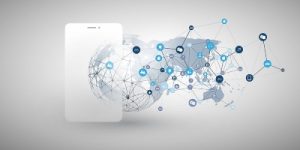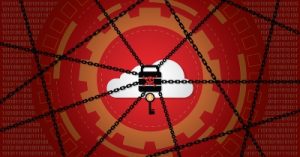06/03/2024 - SANS Miami 2024
06/04/2024 - Techno Security & Digital Forensics C...
06/04/2024 - Leveraging Odaseva for Comprehensive...
06/04/2024 - Google Cloud & BlueVector AI Webinar
06/04/2024 - Migrating to the Tableau Cloud
06/04/2024 - The Use of Publicly Available Informa...
06/04/2024 - Creative Collab #2: Editing Essential...
06/05/2024 - ElevateIT-Dallas Technology Summit
06/05/2024 - **PostPoned** AM AFFIRMation: Leverag...
06/05/2024 - Introduction to F5 BIG-IP Next
06/05/2024 - Modernizing Big Data Platforms
06/05/2024 - Empowering Virtual Training in Govern...
06/05/2024 - Tidelift is Hosting Upstream: A One D...
06/05/2024 - Prioritizing Mission Delivery ...
06/05/2024 - Splunk Attack Analyzer Webinar
06/05/2024 - Modernizing Mission Access (CEU Approved)
06/05/2024 - How to Prioritize Mission Delivery an...
06/05/2024 - Generative AI for Customer Service: S...
06/06/2024 - Kansas City Cybersecurity Conference
06/06/2024 - Salt Lake City Cyber Security Summit
06/06/2024 - SecureWorld Chicago
06/06/2024 - Hybrid Cloud Best Practices
06/06/2024 - Health Innovation Summit 2024
06/06/2024 - INTERFACE Kansas City 2024
06/06/2024 - Government Customer Experience ...
06/06/2024 - AWS Kentucky Lunch and Learn: Empower...
06/06/2024 - Babel Street GEOINT Webinar
06/06/2024 - Implementing Zero Trust Controls and...
06/06/2024 - Phishing-Resistant Solutions: Modern...
06/06/2024 - Embracing A Data-Driven Approach To C...
06/06/2024 - Unlocking the Potential of Proofpoint...
06/06/2024 - Protecting Critical Infrastructure Re...
06/06/2024 - Assuring Change: Infusing Zero Trust...
06/06/2024 - From Silos to Synergy: Bringing Highe...
06/06/2024 - Protecting Sensitive SAP Data with Dy...
06/06/2024 - APEX, CMMC and Project Spectrum
06/10/2024 - CISSP | Official ISC2 Training Week
06/10/2024 - Certificate of Cloud Security Knowled...
06/10/2024 - GitLab Training: Security Essentials...
06/11/2024 - The GAO Green Book Compliance Academy
06/11/2024 - Data Governance Demystified: From Cha...
06/11/2024 - Generative AI: Uses and Abuses in Cyb...
06/11/2024 - Cohesity Cyber Incident Workshop
06/11/2024 - Accelerate AI with Hybrid Data
06/12/2024 - Tableau Server to Cloud: Lift ...
06/12/2024 - Alliant 2 DPA Training
06/12/2024 - Trellis Data's Secure Speech: Secure...
06/12/2024 - Piercing the Near-Peer Cyber Perimete...
06/12/2024 - Bridging Zero Trust and Insider Risk...
06/12/2024 - Optimizing IT Operations: Advanced IT...
06/12/2024 - Smooth Roads Ahead: Making Complex Tr...
06/12/2024 - OASIS+ DPA Training
06/12/2024 - MAS Industrial Products and Services...
06/13/2024 - FAR/DFARS Mid-Year Update 2024
06/13/2024 - ATARC's Federal Open Source Summit
06/13/2024 - Cloud Governance, Risk and Compliance...
06/13/2024 - PSHC Office Hours: CALC+ Pricing Suite
06/13/2024 - Modernizing for Future-Proof Flexibil...
06/13/2024 - Leveraging Tableau Stories and Dashbo...
06/13/2024 - CyberSmart 2024: The More Things Chan...
06/13/2024 - Fortress in the Cloud: Building Zero Trust
06/13/2024 - Defend Smarter: Leveraging AI to Maxi...
06/17/2024 - SANS Rocky Mountain Summer 2024
06/17/2024 - Anchore VIPERR Workshop
06/18/2024 - Defense One Tech Summit
06/18/2024 - Carahsoft DevSecOps Conference
06/18/2024 - F5 BIG-IP Next - Explore the Next Gen...
06/18/2024 - Leveraging AI for Audio and Video Redaction
06/18/2024 - How AI is Revolutionizing Government...
06/18/2024 - Tackling the Elusive Non-Employee Problem
06/18/2024 - 5 Easy Wins to Achieving Zero Trust i...
06/18/2024 - Why MDR Requires a Holistic, Cost-Eff...
06/18/2024 - How to Defend Your Expanding Attack Surface
06/18/2024 - Personal Property Abandonment & Destruction
06/18/2024 - VETS 2 DPA Training
06/18/2024 - Multi-Layered Identity Authentication...
06/18/2024 - Powering Content Velocity with Genera...
06/19/2024 - Maintenance Repair Facility Supplies...
06/20/2024 - Computers For Learning (CFL) In PPMS.gov
06/20/2024 - AI & ML in Records Management
06/20/2024 - From Legacy to Leading Edge: Embracin...
06/20/2024 - AI and State-Sponsored Espionage - A...
06/20/2024 - Enabling Secure Data Storage and Shar...
06/20/2024 - Automation as a Cybersecurity Resource
06/20/2024 - Procurement Integrity - Analytics to...
06/20/2024 - Achieving Cybersecurity Resilience in...
06/20/2024 - How to Hunt for Volt Typhoon Malware...
06/20/2024 - Combatting Emerging Threats: Proofpoi...
06/20/2024 - Leveraging NASPO for Continuous Situa...
06/20/2024 - Tableau Enablement Series Part 6 - Cl...
06/20/2024 - Securing AI: Cybersecurity Operations...
06/21/2024 - INTERFACE Phoenix 2024
06/23/2024 - ISTE Live 2024
06/24/2024 - CCSP | Official ISC2 Training Week
06/24/2024 - Cyber Security Training at SANS San A...
06/25/2024 - Hartford Cyber Security Summit
06/25/2024 - DCAA & DCMA Cost, Pricing, Compliance...
06/25/2024 - Reporting Excess Property in PPMS
06/25/2024 - Google Workspace California Webinar Series
06/25/2024 - Unlocking the Potential of AI ...
06/25/2024 - UiPath Test Suite Webinar
06/25/2024 - OASIS+ DPA Training
06/25/2024 - Cyber Lakehouse for the AI Era, ZTA a...
06/26/2024 - Federal Low-Code App Engine Innovatio...
06/26/2024 - Protecting APIs and Sensitive Data
06/26/2024 - FY24 Exchange Sale
06/26/2024 - CSAW Webinar Series: Incentive Strategies
06/26/2024 - Three Essential Steps to Unlocking Po...
06/27/2024 - Orange County Cybersecurity Conference
06/27/2024 - Maximum ACFR Automation for States, L...
06/27/2024 - Neurodiversity in Cybersecurity Summit 2024
06/27/2024 - Nextgov/FCW Supply Chain Workshop
06/27/2024 - Zero Trust in Action: Approaches to M...
06/27/2024 - Effective Market Research (MRAS)
06/27/2024 - End-of-Life IT & Spilled Data Raises...
06/27/2024 - Securing the Municipal Water Supply f...
06/27/2024 - Streamlining Collaborative Publishing...
07/08/2024 - Data Engineering with Databricks
07/09/2024 - Boosting Data Security & Cyber Resili...
07/09/2024 - Enhancing your Visualizations with Ma...
07/10/2024 - Revolutionizing Supply Chain Manageme...
07/10/2024 - Enhancing OSINT Investigations with D...
07/11/2024 - Pittsburgh Cybersecurity Conference
07/11/2024 - INTERFACE Salt Lake City 2024
07/11/2024 - Zero Trust Training | CCZT
07/11/2024 - The ATO and Cloud Security Summit
07/11/2024 - Zoom at the GovForward ATO & Cloud Se...
07/11/2024 - Beyond Traditional Boundaries: Modern...
07/14/2024 - AGA's 2024 Professional Development T...
07/15/2024 - Acquisition Training for the Real Wor...
07/15/2024 - SANSFIRE Washington, DC 2024
07/15/2024 - FLGISA 2024 Annual Conference
07/16/2024 - AI for Government: Opportunities ...
07/16/2024 - Securing AI: Cybersecurity Operations...
07/18/2024 - Phoenix Cybersecurity Conference
07/18/2024 - Election Security: Protecting the Fou...
07/19/2024 - ElevateIT-Minneapolis Technology Summit
07/19/2024 - ElevateIT-HoustonTechnology Summit
07/22/2024 - CCSP | Official ISC2 Training Week
07/22/2024 - CISSP | Official ISC2 Training Week
07/23/2024 - Google Workspace California Webinar Series
07/23/2024 - Transform Public Sector Pay with Earn...
07/24/2024 - Securing AI: Cybersecurity Operations...
07/24/2024 - SecureWorld AI Virtual Conference
07/25/2024 - Denver Cybersecurity Conference
07/29/2024 - Certificate of Cloud Security Knowled...
07/30/2024 - The GAO Green Book Compliance Academy
07/31/2024 - INTERFACE Montana 2024
08/01/2024 - Cloud Governance, Risk and Compliance...
08/03/2024 - Black Hat USA 2024
08/05/2024 - SANS Nashville 2024
08/06/2024 - 2024 GSA SmartPay Training Forum
08/08/2024 - Vision 2024: Digital Transformation i...
08/12/2024 - SANS Chicago 2024
08/12/2024 - CCSP | Official ISC2 Training Week
08/12/2024 - CISSP | Official ISC2 Training Week
08/13/2024 - 2024 Government Financial Management...
08/15/2024 - Salt Lake City Cybersecurity Conference
08/19/2024 - CMMC Level 1 Implementation
08/19/2024 - SANS Virginia Beach 2024
08/22/2024 - Washington D.C. Cybersecurity Conference
08/22/2024 - INTERFACE Boise 2024
08/26/2024 - Zero Trust Architecture (NIST SP 800-207)
08/26/2024 - Certificate of Cloud Security Knowled...
08/28/2024 - ATARC's Federal Law Enforcement IT Summit
09/03/2024 - Protecting Controlled Unclassified In...
09/04/2024 - SANS Network Security Las Vegas 2024
09/05/2024 - Charlotte Cybersecurity Conference
09/09/2024 - Overview of the CMMC Compliance Model
09/09/2024 - CCSP | Official ISC2 Training Week
09/10/2024 - The GAO Green Book Compliance Academy
09/10/2024 - FedTalks 2024
09/16/2024 - Techno Security & Digital Forensics C...
09/16/2024 - Cyber Security Training at SANS Offen...
09/17/2024 - Using the Yellow Book for the Governm...
09/17/2024 - Systems Security Plan - ( NIST Based SSP)
09/17/2024 - Overview of the NIST Cybersecurity Fr...
09/19/2024 - ITModTalks
09/19/2024 - Des Moines Cybersecurity Conference
09/19/2024 - INTERFACE Albuquerque 2024
09/19/2024 - AGA's 2024 Internal Control &Fraud Pr...
09/23/2024 - Implementing the HIPPA Security Rule...
09/23/2024 - Risk Management Overview (ISO 31000)
09/23/2024 - CISSP | Official ISC2 Training Week
09/23/2024 - Certificate of Cloud Security Knowled...
09/23/2024 - SANS Managing Security Risk 2024
09/25/2024 - Impact of AI on the Cybersecurity Ind...
09/26/2024 - Zero Trust Training | CCZT
09/30/2024 - Managing Information Security (ISO 27001)
09/30/2024 - CMMC Level 1 Implementation
09/30/2024 - Ransomware Risk Management (NIST 8374)
09/30/2024 - CloudSecNext Summit & Training 2024
09/30/2024 - Cyber Security Training at SANS Big E...
10/03/2024 - Columbus Cybersecurity Conference
10/03/2024 - ATARC's Federal Zero Trust Summit
10/06/2024 - Innovate Cybersecurity Summit
10/07/2024 - Zero Trust Architecture (NIST SP 800-207)
10/07/2024 - CMMC Level 2 Implementation
10/07/2024 - Cyber Security Training at SANS North...
10/10/2024 - Bringing Digital Transformation to Fe...
10/11/2024 - Using Generative AI to Transform the...
10/14/2024 - Cyber Security Training at SANS Dalla...
10/15/2024 - Protecting Controlled Unclassified In...
10/16/2024 - INTERFACE Spokane 2024
10/16/2024 - Join Us to Learn How to Elevate Your...
10/17/2024 - GAIN 2024: The Premier B2G Marketing...
10/21/2024 - Overview of the CMMC Compliance Model
10/21/2024 - International Telemetering Conference (ITC)
10/21/2024 - NJSBA Workshop '24
10/21/2024 - Cyber Security Training at SANS Rocky...
10/22/2024 - The GAO Green Book Compliance Academy
10/28/2024 - Cyber Security Training at SANS Orlan...
10/28/2024 - Certificate of Cloud Security Knowled...
10/29/2024 - Using the Yellow Book for the Governm...
10/29/2024 - Systems Security Plan - ( NIST Based SSP)
10/29/2024 - Overview of the NIST Cybersecurity Fr...
10/30/2024 - Phoenix Cybersecurity Conference
10/30/2024 - CyberTalks 2024
11/04/2024 - Implementing the HIPPA Security Rule...
11/04/2024 - Risk Management Overview (ISO 31000)
11/07/2024 - INTERFACE Omaha 2024
11/07/2024 - ATARC's Federal Health IT Summit
11/12/2024 - Managing Information Security (ISO 27001)
11/12/2024 - CMMC Level 1 Implementation
11/12/2024 - Ransomware Risk Management (NIST 8374)
11/14/2024 - Nashville Cybersecurity Conference
11/14/2024 - Zero Trust Training | CCZT
11/17/2024 - Cyber Security Training at SANS DFIRC...
11/18/2024 - Cyber Security Training at SANS Golde...
11/19/2024 - Zero Trust Architecture (NIST SP 800-207)
11/19/2024 - CMMC Level 2 Implementation
11/20/2024 - Internal Auditing for the Defense Con...
11/20/2024 - Federal Low-Code App Engine Innovatio...
11/21/2024 - Boston Cybersecurity Conference
11/21/2024 - San Diego Cybersecurity Conference
12/02/2024 - CMMC Level 3 Implementation
12/02/2024 - Protecting Controlled Unclassified In...
12/02/2024 - Cyber Security Training at SANS Seatt...
12/04/2024 - Houston Cybersecurity Conference
12/04/2024 - Top Five Cybersecurity Predictions for 2025
12/05/2024 - Cloud Governance, Risk and Compliance...
12/05/2024 - Zero Trust Training | CCZT
12/09/2024 - Overview of the CMMC Compliance Model
12/10/2024 - The GAO Green Book Compliance Academy
12/11/2024 - Atlanta Cybersecurity Conference
12/11/2024 - Federal Low-Code App Engine Innovatio...
12/12/2024 - FAR/DFARS End of Year Review 2024
12/12/2024 - INTERFACE Seattle 2024
12/13/2024 - Cyber Security Training at SANS Cyber...
12/15/2024 - Security and Privacy Controls (NIST S...
12/17/2024 - Using the Yellow Book for the Governm...
12/17/2024 - Systems Security Plan - ( NIST Based SSP)
12/17/2024 - Overview of the NIST Cybersecurity Fr...
12/18/2024 - ATARC's Federal C-Level Summit
12/23/2024 - Implementing the HIPPA Security Rule...
12/23/2024 - Risk Management Overview (ISO 31000)
12/30/2024 - Managing Information Security (ISO 27001)
12/30/2024 - CMMC Level 1 Implementation
12/30/2024 - Ransomware Risk Management (NIST 8374)









